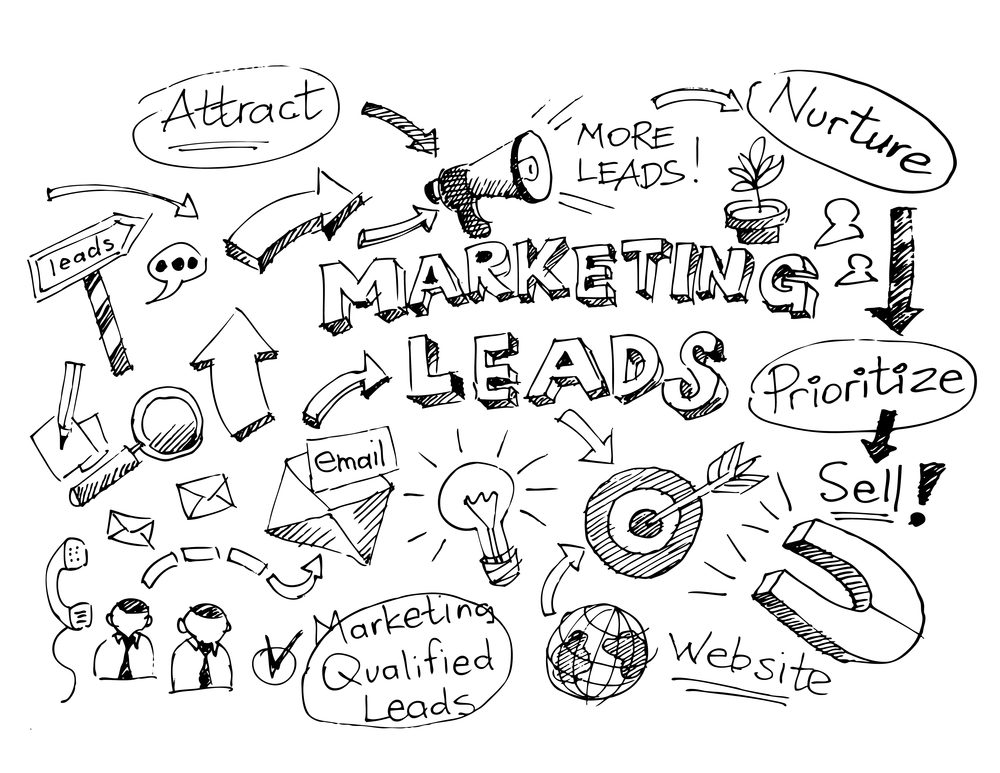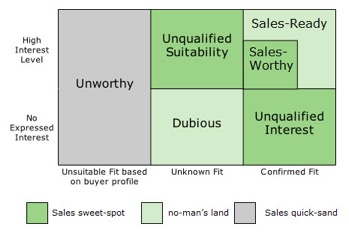Making a sale can give you a great feeling. Watching a lead that you nurtured all the way from the top of the funnel finally complete a big purchase – it’s awesome. It’s called a macro-conversion for a reason: because it’s a really big achievement.
But micro-conversions also matter. If the only performance metric you measure is the sales conversion, then you’re missing out on a whole host of micro-celebrations, each time a lead completes a small step along the path to becoming a paying customer. You’re also missing out on major opportunities to maximize sales-marketing alignment and to optimize paths to purchase over time.
Each micro-conversion in your customer journey is something to consider as part of your lead scoring process, although the exact score you’ll attach will depend on a variety of factors.
First of all, micro-conversions help you to qualify your leads and prioritize them according to their level of purchase intent. They let your sales teams know whom to target first so that they can focus their efforts on the leads most likely to convert. And when your sales reps can see in their CRM what specific steps each qualified and sales-ready lead has taken to build a relationship with your brand, it helps them to tailor their pitches accordingly.
But micro-conversions are also valuable beyond the lead scoring process. Micro-conversions give you guidance about which areas of your site or sections of your sales funnel are the most effective, so that you can optimize them accordingly.
What’s more, by conducting a regression analysis that correlates your company’s highest value customers with the micro-conversions that got them increasingly interested in your product before they closed, you’re able to see which touchpoints and offers are serving your company best. These, of course, are the micro-conversions that should have the highest value in your lead scoring system.
But to perform this type of analysis effectively, you’ll need to track a diverse set of micro-conversions.
Here are 12 micro-conversions to bear in mind when you’re setting up your CRM, scoring your leads, perusing heatmaps or even just sifting through website analytics for customer insights.
1. Consuming product-focused content
If your lead visits one or a few of your high-intent web pages, that’s a micro-conversion right there. For example, if you sell submarines, and your lead reads a series of blog posts about the benefits of purple submarines, chances are good that they are already serious about buying a submarine, because they’ve got as far as choosing the color. Checking out your pricing page and reading customer reviews is another sign of high purchase intent. On the other hand, if the lead just skimmed a short top-of-funnel piece, they probably aren’t so near to purchase.
2. Leaving contact details
Capturing a lead’s contact details is an important step through the sales funnel, but don’t ignore the method through which you got them. Did your lead exchange their email address for a downloadable piece of content? That’s good. Did they complete a demo form, request a call back, or create an account for a members-only forum? That’s even better, because it shows that they are genuinely interested in what you have available and aren’t just out to get a freebie.
3. Using your site’s search function
Using your search bar to find a specific topic or product within your site is an action worth noting. It shows a deeper level of interest in your company, and a desire to learn more about your product or service.
4. Visit duration
The amount of time that a lead spends on your site and how deeply they dive into it is highly significant. Scrolling down the page, staying on a page for enough time to consume long-form content thoroughly, watching a video, and visiting a number of pages over the course of a single session are all signs of serious interest in your product. If your lead returns to your site more than once, and has a relatively short gap between visits, that’s also a safe bet for spiking purchase intent.
5. Social media follows
When a lead follows your brand on one or more than one social media channel, it shows brand affinity. It’s a sign that they care about your opinions, products, and news. You should give weight to every additional channel that they use to connect with you.
6. Social media engagement
Does your lead like your social media posts, reshare them, comment on them, or mention you in their own posts? This could be an even stronger signal than a follow.
7. Sharing your content
Sharing your blog posts, tweets, Instagram posts, or similar social media content all indicate a lead who feels a connection with your brand.
8. Commenting on your blog posts
A lead who takes the time to leave feedback, a question, or share their thoughts in response to your blog posts is a lead who already has a deep interest in your company.
9. Interacting with your product pages
If the lead added a product to their wishlist, placed it in their cart, or even clicked to expand the details of one or two products, it’s a good sign of possible purchase intent.
10. Downloading lead magnets
Downloading a free ebook, checklist, template, or any type of giveaway that you created to drive leads through your sales funnel shows that it’s doing exactly what it was meant to do – generating micro-conversions.
11. Connecting with customer support
Chatbots makes it easy for potential customers to get more information from your customer support without having to handle a human-to-human exchange. “Talking” with a chatbot or any branch of your customer support builds the relationship between your lead and your company.
12. Interacting in a webinar
Webinars give the lead a chance to see a company representative talk about the product and share information in a more intimate manner than reading a blog post. It creates the beginnings of a customer relationship. Webinars also offer more opportunities for micro-conversions, like if the lead stayed in the webinar until the end, whether they asked questions, and if they clicked on the CTAs during the course of the webinar.
Micro-conversions dot the path to an engaged customer
While completing the final step in making a sale is a fabulous achievement, it’s important not to overlook these micro-conversions that line the path to a new customer.
Micro-conversions can provide a great deal of value to your company, your marketing campaigns, and your sales process, with each one delivering important insights into customer behavior, intent, and experience.



